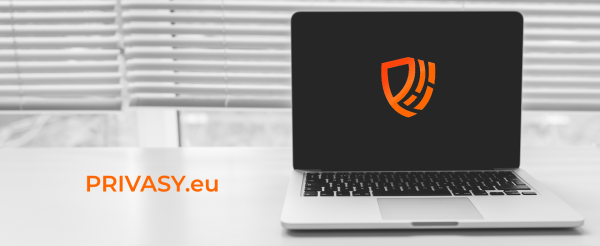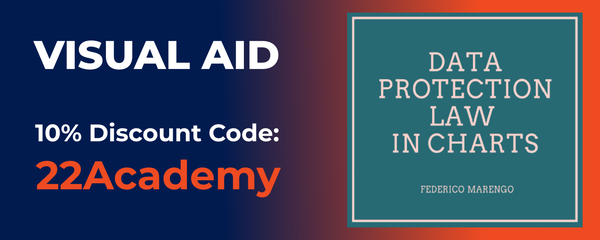Key Regulations and Frameworks
Welcome to our seven-week journey into the world of AI Governance! Over the coming weeks, we will be delving deep into each domain of the AIGP curriculum, providing you with a comprehensive understanding of their contents. Whether you're a seasoned AI professional or just starting out, our aim is to equip you with the knowledge and insights you need to navigate the complex landscape of AI governance. We encourage you to actively engage in the discussion by leaving comments and sharing valuable resources that can help fellow readers better comprehend the nuances of each domain. Together, we'll explore the key concepts, challenges, and solutions that shape the future of responsible AI. So, join us on this exciting educational journey, and let's dive into the world of AI governance together!
In the ever-evolving landscape of artificial intelligence (AI), balancing the immense potential for transformation with the unique risks it poses is a top priority. To address these challenges, governments and international bodies are implementing AI governance regulations and frameworks. For data protection and privacy professionals with a keen interest in AI governance, understanding these measures is essential for navigating the AI terrain. In this article, we will focus on the European Union (EU) AI Act, principal AI risk management frameworks, and AI regulations in Canada, the United States, and China.
EU AI Act
The EU AI Act is a groundbreaking piece of legislation, categorizes AI systems into four risk levels, providing a comprehensive foundation for AI governance:
- Prohibited AI systems: These are strictly banned within the EU. Examples include systems that manipulate behavior through social scoring or enable real-time mass surveillance.
- High-risk AI systems: These pose significant risks to fundamental rights and safety and are used in fields like recruitment, healthcare, and law enforcement.
- Limited-risk AI systems: These carry lower risks and are typically found in applications like chatbots and product recommendation systems.
- Minimal-risk AI systems: These present little to no risk and are often used in gaming or email filtering.
High-risk AI systems, according to the EU AI Act, have strict requirements, including transparency, human oversight, and robustness. Foundation models, a subset of high-risk AI, form the basis for various applications. Developers and users must notify authorities before deployment, and the Act enforces compliance with substantial penalties. It also encourages innovation in AI testing and exempts certain research. Transparency is promoted through a public database of high-risk AI systems.
Global AI Regulation Landscape
As AI technologies gain prominence, governments worldwide are grappling with the challenge of striking a balance between fostering innovation and safeguarding public interests and safety through effective AI governance.
Canada has taken a comprehensive stance with proposed legislation like the Digital Charter Implementation Act, 2023 (Bill C-27), which includes the Artificial Intelligence and Data Act (AIDA), outlining a framework for governing AI development and usage.
The United States, under President Joe Biden's leadership, has emphasized responsible AI development with an Executive Order on Safe, Secure, and Trustworthy Artificial Intelligence, calling for standards, guidelines, investments in AI safety and security, and public engagement.
China, in 2022, introduced draft regulations targeting generative AI, emphasizing registration and preventing misuse. These regulatory efforts face challenges due to the complex and rapidly evolving nature of AI technology and the global scope of its development. However, they also present opportunities to ensure responsible and ethical AI use while fostering innovation.
The implications for AI system development and deployment include the need for compliance efforts and the emergence of a market for AI compliance solutions, with the evolving global landscape of AI regulation expected to significantly influence the AI sector in the years ahead.
Click here to join for Free!

Principal AI Risk Management Frameworks and Standards
In the global landscape of AI governance, several significant AI risk management frameworks and standards have emerged, each with unique strengths and applications:
- ISO 31000:2018 Risk Management: Versatile, it guides risk identification, evaluation, treatment, and monitoring, including AI-related risks.
- NIST AI RMF (National Institute of Standards and Technology, AI Risk Management Framework): Tailored for AI, it covers governance, risk identification, assessment, mitigation, and monitoring.
- EU AIA (European Union proposal for a regulation laying down harmonized rules on AI): Aims to unify AI regulation within the EU, focusing on minimizing risks in AI system design, development, deployment, and operation.
- HUDERIA (Council of Europe Human Rights, Democracy, and the Rule of Law Assurance Framework for AI Systems): Evaluates AI's implications on human rights, democracy, and the rule of law.
- IEEE 7000-21 Standard Model Process for Addressing Ethical Concerns during System Design: Ensures ethical alignment in AI system design, emphasizing fairness, accountability, and transparency.
- ISO/IEC Guide 51 Safety Aspects: Provides guidelines to incorporate safety aspects into standards, aiding AI safety standards development.
- Singapore Model AI Governance Framework: Outlines principles and guidelines for AI system governance in Singapore, emphasizing accountability, transparency, and fairness.
These frameworks and standards share common emphases on governance, risk identification, mitigation, and monitoring. However, they also exhibit variations, such as the NIST AI RMF's comprehensive coverage, the ethical focus of the IEEE 7000-21 standard, the legal binding nature of the EU AIA, and the voluntary aspects of some frameworks like ISO 31000:2018 and the Singapore Model AI Governance Framework.
The global AI governance landscape is continually evolving, with new regulations and standards in development. For professionals in AI data protection and privacy, staying updated is vital for effective risk management. When choosing a framework or standard, consider specific requirements, whether you prioritize comprehensive coverage, ethical considerations, or compliance with regional regulations.
In the coming weeks, we'll continue our journey through the AIGP curriculum, equipping you with a solid foundation in the fundamentals of AI governance. We invite you to actively engage with us, share your insights, and let us know your thoughts. Do you see any specific challenges or opportunities in the AI landscape related to data protection and privacy? Have you encountered examples that resonate with the content we've explored in this article? Join the discussion in our group, as together, we navigate the ever-evolving realm of AI governance.
Join the AIGP Study Group on Facebook to engage in discussions, share insights, and connect with fellow learners. Let's continue exploring AI Governance together!



